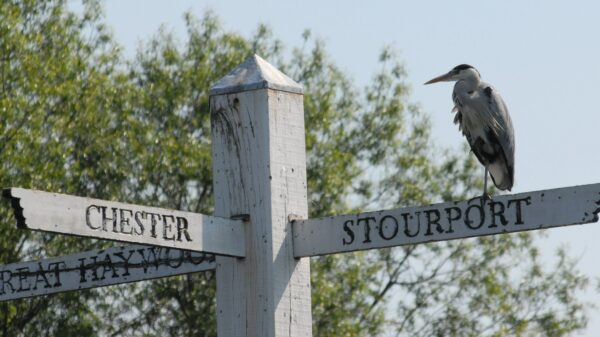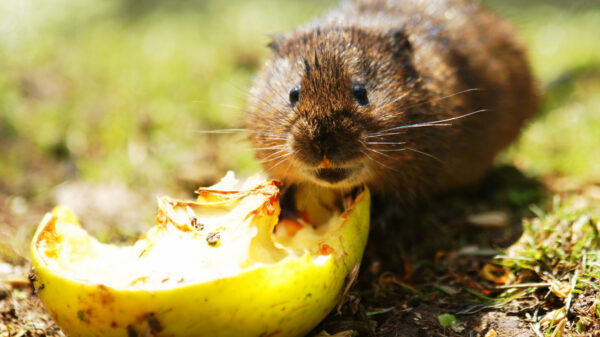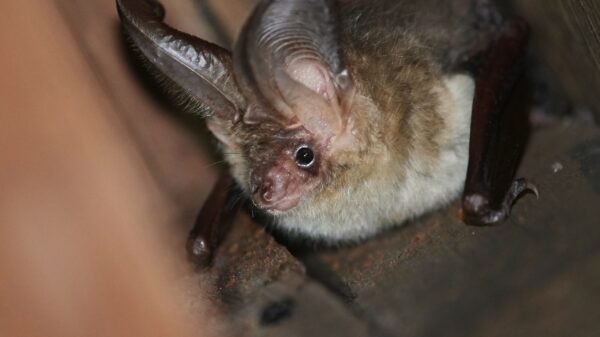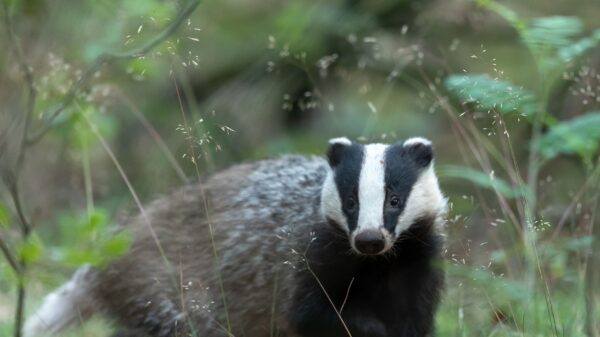Restoration Hub > Environmental Toolkit > Protected Species: Great Crested Newt
Restoration Hub
Protected Species: Great Crested Newt
About
Great Crested Newts (Triturus cristatus) (GCN) are the largest of our three native newt species. Compared to the Smooth Newt and Palmate Newt, which may only reach 11cm and 9cm respectively, the GCN can reach up to 17cm. Like other newt species the GCN spends much of its life on terrestrial land outside of the breeding season and as much as several hundred metres away from a watersource. This species prefers woodland habitats with leaf litter, burrows and vegetation offering shelter, though they are not limited to this habitat.
Why is the Great Crested Newt Protected?
Although widely distributed throughout much of lowland Britain, the GCN is suffering major declines throughout Europe due to loss of habitat, intensification of agriculture and infilling of ponds. A decline in the suitability of the terrestrial and freshwater habitats, introduction of predatory fish, as well as industrial pollution and agricultural runoff, fragmentation and poor pond management are causes for the species decline.
Protection Status
GCN’s are a European protected species and listed in Schedule 5 of the Wildlife and Countryside Act (1981) meaning that it is an illegal offence to “intentionally kill, injure or take any wild animal listed on Schedule 5 and prohibits interference with places used for shelter or protection, or intentionally disturbing animals occupying such places” unless under specified circumstances. The maximum fine on conviction of offences is currently £5,000. The species is protected due to significant habitat loss in its native range across much of continental Europe.
Identifying Great Crested Newts
The GCN is easily distinguished from the other newts by its 17cm size as well as its bumpy and very dark skin colour. The underside of this species is yellow/orange with large (generally un-uniform) blotches leading to its dark under chin. Breeding males (March-June) have a jagged crest along its back, as well as having an iridescent strip on its tail, used for mating displays. The female’s yellow/orange belly extends through to its tail. When identifying the GCN it is also important to take into account the species at different life stages, where it may be more difficult to identify.
Habitat Suitability Index (HSI)
Without being able to handle the species, due to their protection status, it can be difficult to directly identify a GCN presence. A commonly used method to assess the likelihood of GCN presence in a waterbody is a Great Crested Newt Habitat Suitability Index (GCNHSI). This method looks at 10 factors to indicate the liklihood of having GCN present:
- Location
- Pond area
- Pond permanence
- Water quality
- Shade
- Wild fowl
- Fish
- Ponds,
- Terrestrial habitat
- Macrophytes
Each factor is assessed and converted to be between 0.01 – 1.
| Poor | <0.5 |
| Below Average | 0.5-0.59 |
| Average | 0.6-0.69 |
| Good | 0.7-0.79 |
| Excellent | >0.8 |
Once the 10 scores allocated they are then multiplied together, the tenth root of this number is then calculated: HSI = (SI1 x SI2 x SI3 x SI4 x SI5 x SI6 x SI7x SI8 x SI9 x SI10) ^(1/10). The result should be somewhere between 1-0, giving the liklihood of GCN on being present within a waterbody.
Great Crested Newts on Waterways
The fear of finding Great Crested Newts extends to canal restoration, where higher costs and further delays could be possible. Within the UK GCN are relatively widespread and can be found in a wide range of water bodies including garden ponds, disused mineral extractions, water filled ditches, dew ponds and disused canals or waterways. Primary concerns arise when looking to restore derelict canals that have been allowed to scrub over or become standing water, where GCN have had a chance to colonise. Under their EU protected status, killing or injuring a GCN comes with a hefty fine and potential imprisonment. Mitigation for GCN can also be costly depending on population and habitat availability.
Activities that can harm Great Crested Newts
As with all construction projects restoring and working on canals involve a variety of activities that can harm the Great Crested Newts. These include:
- Removing dense vegetation and disturbing the ground
- Excavating the ground
- Filling in or destroying ponds or other water bodies
- Disconnecting or isolating habitats
- Changes to the water table
- Increases the numbers of people, traffic and pollutants in the area or the amount of chemicals that run off into water bodies
With this in mind appropriate planning and pre-work surveys will reduce the chances of un-intentionally killing a GCN. Methods can also be employed by a qualified person to place barriers, relocate and monitor sites to prevent GCN from recolonizing.
Minimizing the Risk
It is important for all restoration projects to comply to both EU and UK law or risk losing funding, being fined or potentially facing a prison sentence. There following steps should be followed in order the reduce these risks.
- Complete a scoping survey and ecological appraisal: Undertake a desk based study and identify if your site has records or reports of protected species and the habitats located on site.
- Conduct an Ecological Appraisal: This is a survey that assesses how the project will affect species and habitats present, as well as identify further species or habitat of importance.
- Ecological surveys: If the above points indicate the site does have important habitat or protected species then ecological surveys should then follow, depending on species present and their requirements (i.e phenology, seasons, habitat etc.)
- Mitigation : If the works carried out will adversely affect either protected species or important habitat, than mitigations will need to be carried out. This includes habitat creation to be replaced with a similar habitat of the same size and condition elsewhere, translocations, alterations to existing plans, species monitoring or restrictions on site.
What do I do if I spot a Great Crested Newt?
If you come across a GCN whilst carrying out restoration or development work, you must alert the appropriate person in charge of heading out the task. Work that will affect the GCN should then be put on hold until the presence of the GCN can be verified. You should not attempt to handle or move the GCN due to its protection status, which could lead to a criminal conviction. You should also notify the appropriate conservation body or authority such as the Wildlife Trust, RSPB, NBN Gateway, Environment Agency, The Biological Records Centre, Natural England or Local Authority. These organisations will be able to give advice on how to move forward with a project. If the GCN has been identified as a constraint on development contact the local ecologist, who will advise on whether mitigation or acquiring further licences will be necessary.
Case Study: The Montgomery Canal
The Montgomery Canal is one site that now has an extensive experience of dealing with GCN. After the discovery of GCN’s on a future restoration site beyond Pryce’s Bridge in 2014, The Shropshire Union Canal Society and The Canals and Rivers Trust undertook mitigation works to alleviate this issue to allow for restoration work to recommence. With newt fencing erected and qualified ecologists assessing the site, it was determined by Natural England that in order to receive the newt licencing that the society would have to create a new habitat equivalent to the size and condition of their existing site. Once redwith pond was completed and stocked with water the translocation program began with the society relocating 70+ newts to their new home. Restoration work at Pryce’s bridge recommenced in July 2015.
Find out more from the Shropshire Union Canal Society and their work here: http://www.shropshireunion.org.uk/
Our use of cookies
We use necessary cookies to make our site work. We'd also like to set optional analytics cookies to help us improve it. For more detailed information about the cookies we use, see our 'Cookie Policy page'.Edit preferences Accept
Privacy Overview
| Cookie | Duration | Description |
|---|---|---|
| __stripe_mid | 1 year | Stripe sets this cookie to process payments. |
| __stripe_sid | 30 minutes | Stripe sets this cookie to process payments. |
| cookielawinfo-checkbox-advertisement | 1 year | Set by the GDPR Cookie Consent plugin, this cookie records the user consent for the cookies in the "Advertisement" category. |
| cookielawinfo-checkbox-analytics | 1 year | Set by the GDPR Cookie Consent plugin, this cookie records the user consent for the cookies in the "Analytics" category. |
| cookielawinfo-checkbox-functional | 1 year | The GDPR Cookie Consent plugin sets the cookie to record the user consent for the cookies in the category "Functional". |
| cookielawinfo-checkbox-necessary | 1 year | Set by the GDPR Cookie Consent plugin, this cookie records the user consent for the cookies in the "Necessary" category. |
| cookielawinfo-checkbox-others | 1 year | Set by the GDPR Cookie Consent plugin, this cookie stores user consent for cookies in the category "Others". |
| cookielawinfo-checkbox-performance | 1 year | Set by the GDPR Cookie Consent plugin, this cookie stores the user consent for cookies in the category "Performance". |
| CookieLawInfoConsent | 1 year | CookieYes sets this cookie to record the default button state of the corresponding category and the status of CCPA. It works only in coordination with the primary cookie. |
| PHPSESSID | session | This cookie is native to PHP applications. The cookie stores and identifies a user's unique session ID to manage user sessions on the website. The cookie is a session cookie and will be deleted when all the browser windows are closed. |
| Cookie | Duration | Description |
|---|---|---|
| _fbp | 3 months | Facebook sets this cookie to display advertisements when either on Facebook or on a digital platform powered by Facebook advertising after visiting the website. |
| _ga | 1 year 1 month 4 days | Google Analytics sets this cookie to calculate visitor, session and campaign data and track site usage for the site's analytics report. The cookie stores information anonymously and assigns a randomly generated number to recognise unique visitors. |
| _ga_* | 1 year 1 month 4 days | Google Analytics sets this cookie to store and count page views. |
| _gat_gtag_UA_* | 1 minute | Google Analytics sets this cookie to store a unique user ID. |
| _gat_UA-* | 1 minute | Google Analytics sets this cookie for user behaviour tracking.n |
| _gid | 1 day | Google Analytics sets this cookie to store information on how visitors use a website while also creating an analytics report of the website's performance. Some of the collected data includes the number of visitors, their source, and the pages they visit anonymously. |
| CONSENT | 2 years | YouTube sets this cookie via embedded YouTube videos and registers anonymous statistical data. |
| Cookie | Duration | Description |
|---|---|---|
| test_cookie | 15 minutes | doubleclick.net sets this cookie to determine if the user's browser supports cookies. |
| VISITOR_INFO1_LIVE | 5 months 27 days | YouTube sets this cookie to measure bandwidth, determining whether the user gets the new or old player interface. |
| YSC | session | Youtube sets this cookie to track the views of embedded videos on Youtube pages. |
| yt-remote-connected-devices | never | YouTube sets this cookie to store the user's video preferences using embedded YouTube videos. |
| yt-remote-device-id | never | YouTube sets this cookie to store the user's video preferences using embedded YouTube videos. |
| yt.innertube::nextId | never | YouTube sets this cookie to register a unique ID to store data on what videos from YouTube the user has seen. |
| yt.innertube::requests | never | YouTube sets this cookie to register a unique ID to store data on what videos from YouTube the user has seen. |






